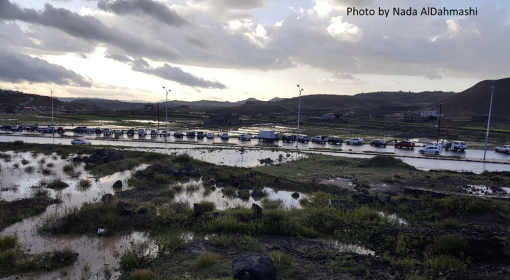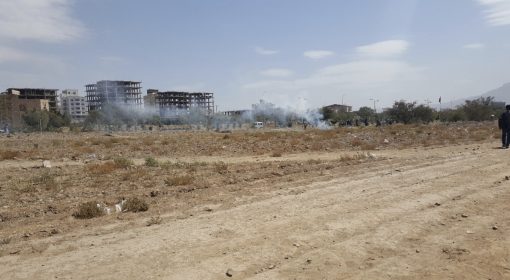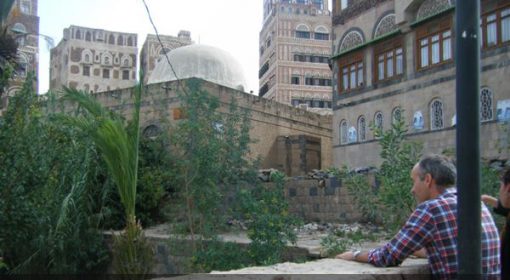Agricultural land declination: Urbanization, lack of natural resources, and neglect
by Madiha Al-Junaid
Of what is more than a decade ago, I remember as a kid and teenager how very close green areas of farms were to my home. We even used to take a walk to the nearby gardens when possible if we wanted to have a family picnic or so. Nowadays, however, agricultural lands seem to be pushed further and further away from the city. The green blanket I used to see covering areas beyond the sight is now closely to being not existing; only few scattered farms around the center of the city I live in, Sana’a – Yemen.
For some cities and towns abroad, such as Nairobi of Kenya, movements are pushing the country toward ‘more green’. Frankly, it is the opposite scenario in Yemen where such movements are rarely found, if not existed; as the country is struggling with vulnerable water resources and dry seasons exceeding the number of wet seasons due to which essential crop vegetation is declining, let alone unutilized green spaces.
It is not only the lack of water resources that restricts the country from having more spacious green areas and enhanced environmental and ecological life. Rather, it is the lack of consideration and feeble efforts toward a sustainable management on a national scale. Furthermore, agriculture is observed as a source for food, and unfortunately is taken for granted while neglecting studying all factors and circumstances surrounding this industry for development.
Wells are being drilled down deep to hundreds of meters posing a threat to the future of the coming generations. There when water can no longer be found, the land becomes abandoned mostly, and/ or offered for sale (generally for construction purposes). In one of the interviews made by the Cocoon Project in collaboration with the Water and Environment Centre (WEC), a group of farmers referred the cause of abandoning their farms and turning them into construction areas to the decline in the water level. “We uprooted all banana crops after the wells in the land had been dried out. It was too late to discover that the water consumption was way higher in rates than the recharge,” a farmer in one of the Wadis of Yemen said. Those farmers relied lately extensively on groundwater resources, which has led to a deterioration and severe water shortage, and hence a degradation in agricultural activities.
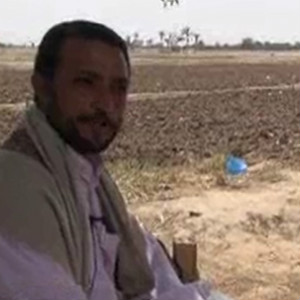
Thus, awareness plays a significant role in educating the nation about the green spaces and environmental balance, water-stress-tree plantation, water conservation and management, seasonal cultivation/ agriculture and good land preparation…, etc. If the nation is well aware; supported to identify its needs in each specific field; aware of all factors and possibilities, and working toward better integrated resourceful solutions and better agricultural management, it will result in more spacious green ‘land covers’ and increased agricultural production.
Furthermore, talking this to any regular citizen, they will easily recall urbanization and the exploding population as a certain cause for agricultural land degradation and declination. Adding to that, it is a trend and a common custom in Yemen that construction is superior to farming. Having that as well as the rising high rate of poverty in the country will result in putting one’s land (parts of land) for sale considering the high ratio of returns during this inflation period (Yemen Conflict) and high land renting and purchasing rates.
In a previous blog titled ‘Goodbye Agriculture’ on TheWaterChannel, causes to this “phenomenon”, leaving agriculture, were highlighted. Mainly it was caused by young people searching for more rewarding and prestigious jobs in the cities. It was concluded that to tackle this issue, efforts need to be heading toward farming modernization and “high value commercial opportunities”. 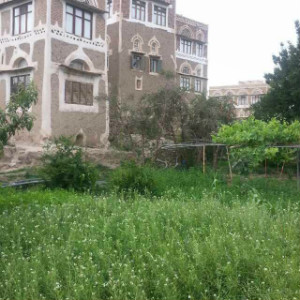
Apart from profits and coping with the economic status of the country there comes ‘possession’. In other words, being in top roofs or in 2nd floor apartments or higher, an observer can experience a scenery of a large number of trees and green areas that many of the street-walkers cannot see. It is due to the fact that almost all constructions in a certain location on a certain land enclose and fence the entire area, including green spaces mostly covered with many old trees with so and so meters high, and houses’ vegetable and fruits farms (See picture on the right taken by Mona Al-Ansi). This is apart from very few public parks that are not well taken care of from the first place.
Al-Rawdha ‘The Garden’, a living example
In an area few kilometers northern the center of the capital city Sana’a, Al-Rawdhah lies uniquely with its hundreds-of-years-old buildings similar to those in the old city of Sana’a. Rawdhah has always been considered “the twin city of the old city of Sana’a”. It is also believed to be named after the Arabic translation of its name which means “the garden”. The garden was once, as the name entitles, full of trees and plants. Yet until the last decade or two the population started to observe the reduction in the number of green areas compared to the past. “In the past it was greener and less crowded,” a citizen recalls. She added that there were more farms and wells. “I could only find one well nearby today,” she realizes with eagerness in her voice while proceeding to acknowledge that “the water in Al-Rawdhah wells tastes like no other in the entire governorate if not in the country. It is very pure and light and you never get enough of it”.
Al-Rawdhah is turning into a place with more and more not-properly-planned construction and houses, as well as military camps. There is very little space for farms. Nevertheless, it is the lack of care and proper research that the area lacks, where urbanization and water scarcity add much of a burden to it. An issue that has been witnessed lately in houses with small gardens is having their plants corrupted and deteriorated because of very small worms growing inside the branches of their plants and eating it all from inside out. This area requires more research and experiment to prevent such an agricultural threat. “However, the worms strangely disappear during the rainy season where everywhere in here turns green, maybe it is due to the fact that heavy rains kill them,” she said explaining the absconding of the worms during certain times in the year.

Old photo of Al-Rawdah (Source: Sanaa Forums) and Rawdha nowadays (by Mona Al-Ansi)
The greener side
Many people from abroad are not aware of the fact that Yemen has a variety of climates and very diverse environments. It is widely (and wrongly) known that since Yemen is in the Arabian Peninsula it must then be mostly, if not all, a desert. See, this very wrong information was very unfortunate to Yemen and unfair to the natural resources it owns, which from that perception it was neglected and abandoned. Yemen on the other hand possesses a very rich ecological life ranging from various and rare types of plants, animals and species. In addition to the nature reserves, such as Otma, Bora, Hof, Socotra, the Adeni wetlands, and others which are still under study, the country has large areas of wadis, landscapes and plains with agricultural belts. These areas are very green and diverse. And many villages, countryside, and even some towns in the country are just a green painting, especially during the rainy seasons (coming two times every year with more rain during the wet years). “I am a new comer and I have never thought that theses spaces with just soil will turn this green with those flowers and grass all around. Rain has revived the atmosphere and the land,” a new comer at the Sana’a University said.
With all that have been said, it is important to mention the grasses that grow rapidly here and there in the city and in wide areas with no building, as well as the ignored parks are all green during the rainy season are all planted by nature. However, these spaces are not being adapted for agriculture which is a waste of resources.

From left to right: (1) Al-Hawf-Al-Mahrah – green during the rainy season of 3 months; (2) Bara’ Reserve- last tropical forest in the arabian penisula – 300-year old tree; (3) Best Yemeni coffee is grown at Bara’ Reserve; (4) Tehama is always green – grains (source: Dr. Musawa – instagram)
Finally, the nation needs to know that trees and the “green blanket” is an environmental health/ boost. It keeps the climate and environment balanced. Dust particles and humidity issues are less when there is more ‘green’, let alone the beautiful and eye-relaxing scenery. This beauty needs to be revealed and unveiled. Fencing and building walls around the beautiful green spaces is not for the common good. The life circle of trees and plantation in itself is a phenomenon, let’s stretch our arms to reach people from all ages and backgrounds and aware them on the advantages of a greener environment. Let’s prepare the nation for another era of a healthier planet and education for environment. Agriculture is not securing the food for the hungry stomachs ONLY, but also securing economic independency, youth employment, and most importantly greener and healthier environment.
